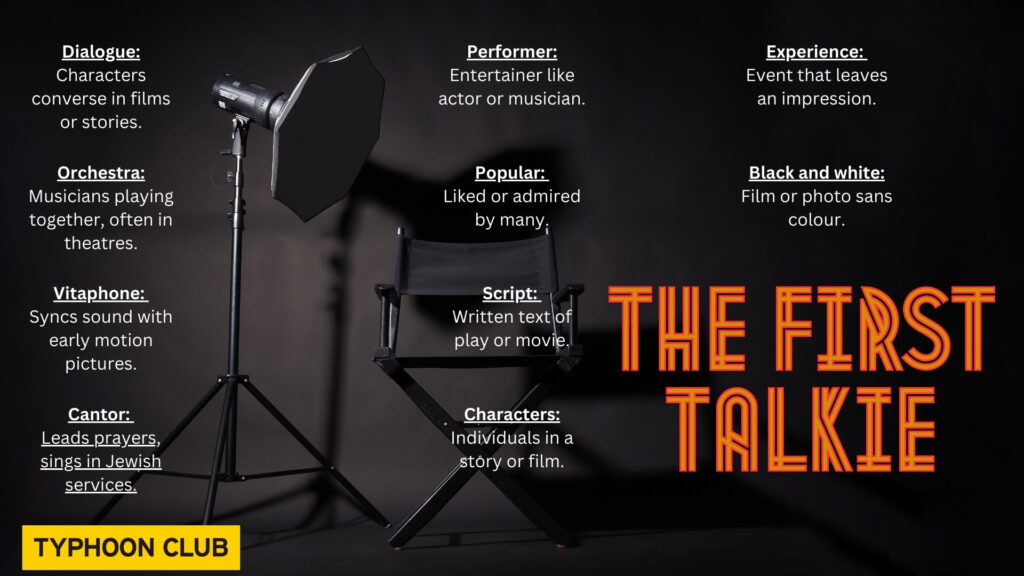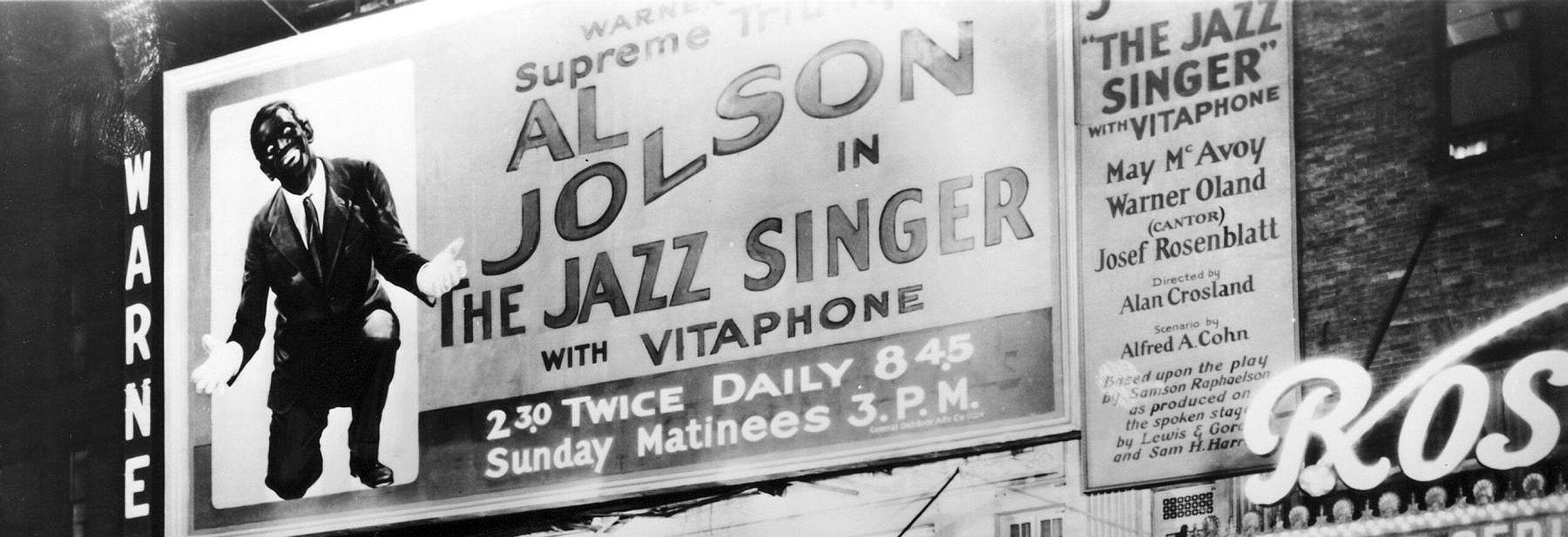
Step back in time to the birth of talking films with “The Jazz Singer.” Imagine a world without dialogue in movies, where the actors’ words were yet to be heard. Experience the excitement as the first spoken words, “You ain’t heard nothin’ yet,” captivated audiences.
If you go to the cinema today, what makes a great film; one that really stands out from the rest? The actors? The action? The story? Everyone will have their own opinion. One thing that we will all agree upon though is the dialogue, or the speaking in the film. We like to listen to what each character has to say. And the dialogue, of course, can help the storyline of the film move along.
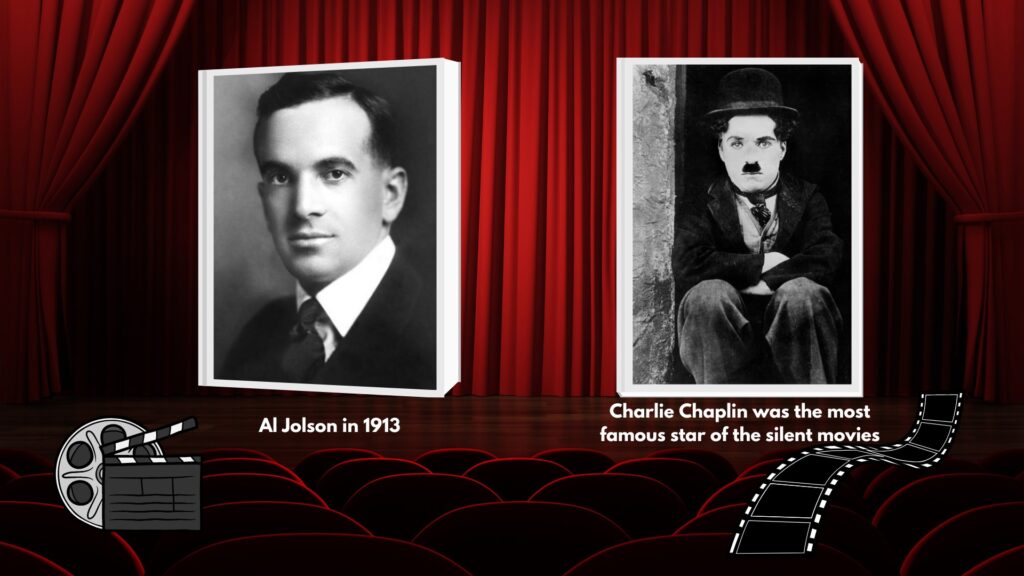
Until 90 years ago, there was no dialogue in films. Films were also in black and white, not colour. Many cinemas had an orchestra that played along. Others played music on records. It was a different experience to what we enjoy today.
Everything changed on 6th October 1927 when a film called The Jazz Singer was released. Developed by Bell Laboratories, this 89-minute film was the first to include recorded dialogue. The process of adding dialogue was called Vitaphone, and it was the beginning of what was called ‘the talkies.’
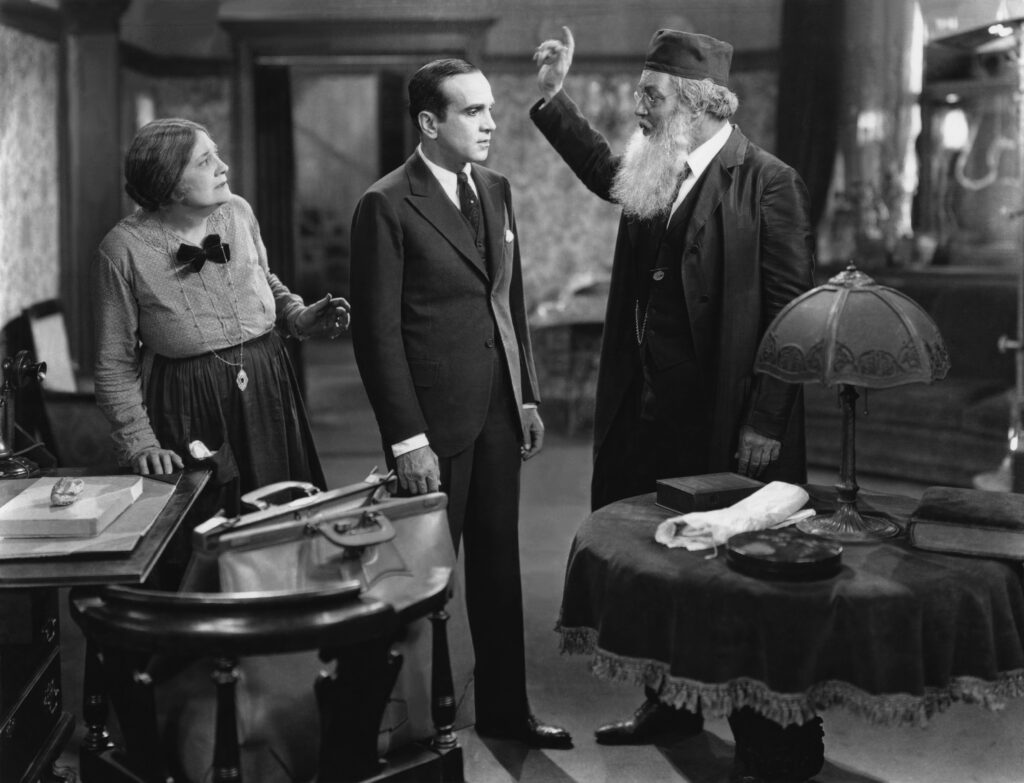
The story was about a father who wanted his 13-year-old son to become a cantor – the person who sings and leads the prayers in a Jewish religious service. The son does not agree with his father’s choice and runs away to become a famous jazz singer.
The main role was taken by a performer called Al Jolson. He was already very famous. Jolson’s appearance helped the film to become one of the most popular. That, of course, together with the audience hearing dialogue for the first time. The first words to be heard were, “Wait a minute! Wait a minute! You ain’t heard nothin’ yet!”
There were two scenes in The Jazz Singer that included dialogue. The first included 60 words: the second, 294. A film script today will have about 11,250 words of dialogue in it. That’s quite a few more than in 1927!
QUESTION:
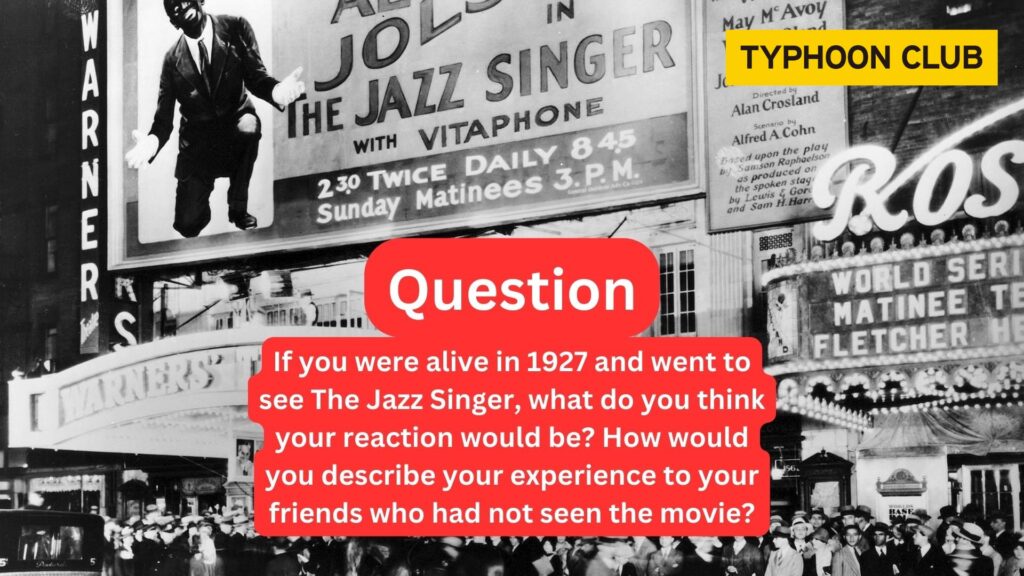
Take a quick look at a preview of The Jazz Singer.
VOCABULARY
